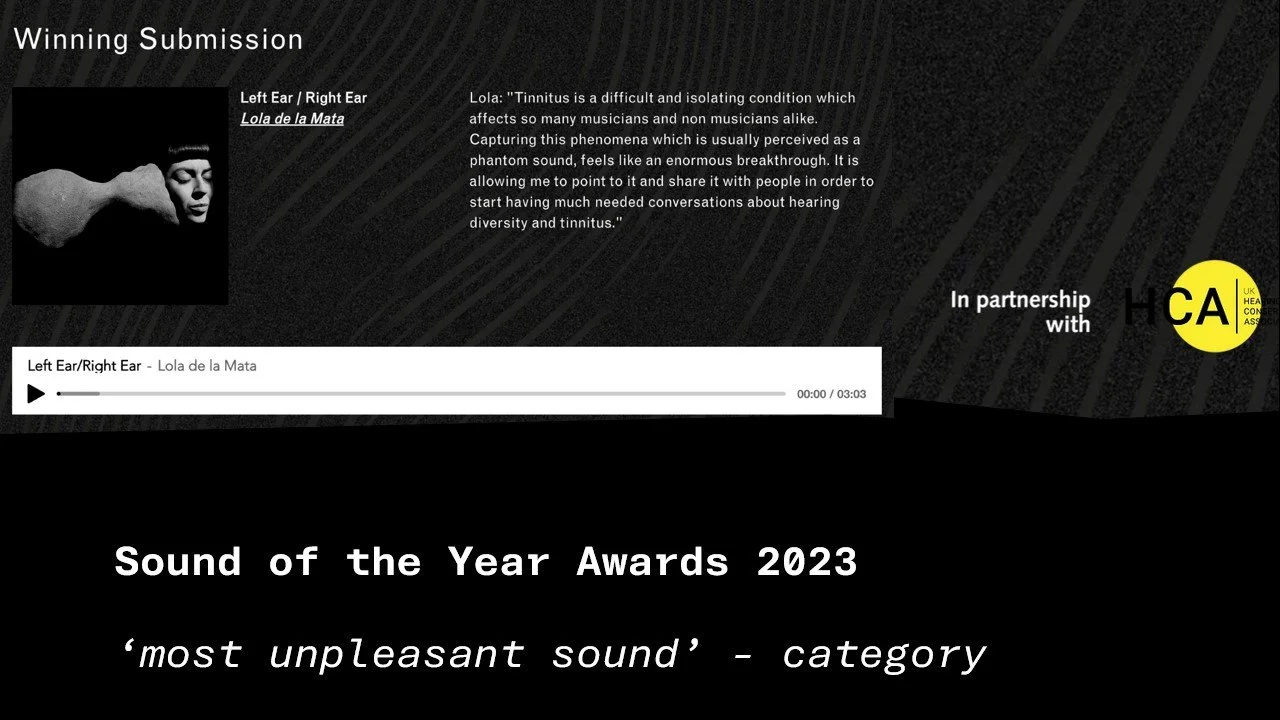Sirens from the Cochlea’s Ocean: Tinnitus, Glass LatTices and Transducers
Lola de la Mata
Composition department (music), University of Liverpool
(PhD, 2nd Year)
3 min talk
My practice engages in an aurally diverse landscape, and considers alternative formats of sonic presentation such as exhibition and installation, which is in direct opposition to the traditional approach of a classical concert experience.
May 2024 I released ‘Oceans on Azimuth’, a concept album which featured sculptural instruments and objects made from glass, metal and ceramic inspired by the mechanisms of the ear. The project centred my own experience of living with tinnitus, and was supported in part by collaborations with biophysicists from the Hudspeth laboratory of sensory neuroscience at Rockefeller University where they study SOAEs, the cochlea’s capacity of emitting its own sounds. While I was there, we recorded my ears and discovered that my perceived tinnitus was SOAEs, (which is supposedly rare)…these recordings went on to be awarded ‘worst sound of the year’, last year.
Moving on from making works focused on my own tinnitus, the project I am presenting at the conference is a new work - a tinnitus choir and glass installation project currently in early R&D phases and undergoing ethical approval. It’s important to me, to diffuse the choral composition on structures which are unique, different from one another, and just like our ears, have their own range of vibration. The aesthetics of a traditional sound installation often utilises balanced black Genelec speakers in a white space - however, in working with glass, I am chosing to diffuse the listening experience on ‘unofficial’ listening devices and fragile forms as a way to represent hearing with interference, of hearing with difference.
I expect to show the work next year (in 2026). As you can see from my slide, I have been experimenting with different glass fusing and welding techniques. My next steps will be to approach vibrating these forms using transducers + a combination of hanging, suspending and anchoring, and hope I find a solution to prevent the glass from cracking! Alongside this I will continue my search for a choir to collaborate with, and partners to show the work with - be it in a museum, gallery or festival contexts.
Tinnitus, which affects musicians 4x more than others, but can affect anyone, continues to have stigma around it (according to the charity Tinnitus UK there are 7.6 million people living with tinnitus in the UK). With this project I propose that we might choose to device for audiences beyond the pre-conceived ‘normal listener’ with ‘perfect’ hearing, who I would argue does not exist, in an effort to move toward a taboo-less, more accessible human listening.

